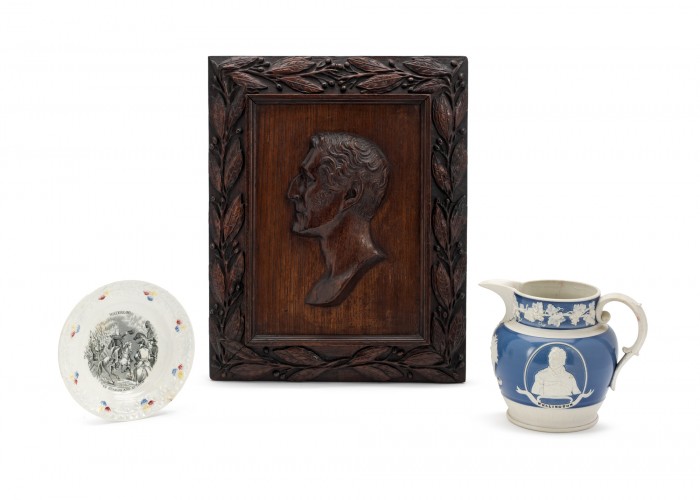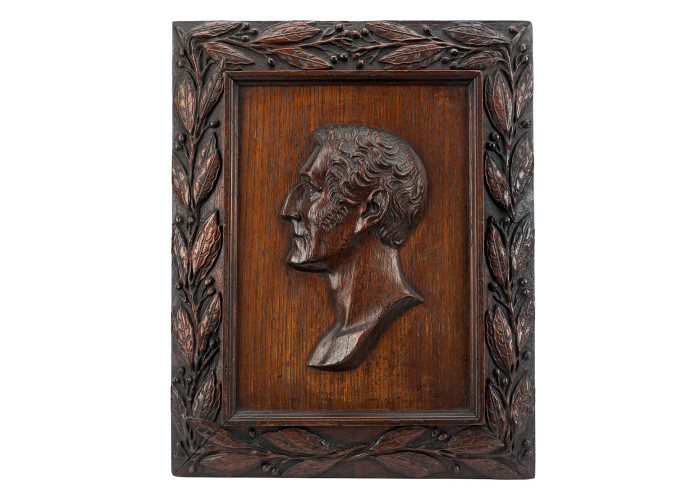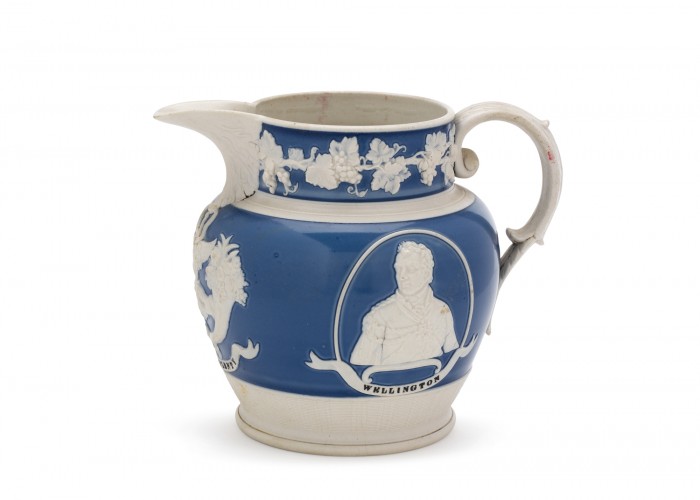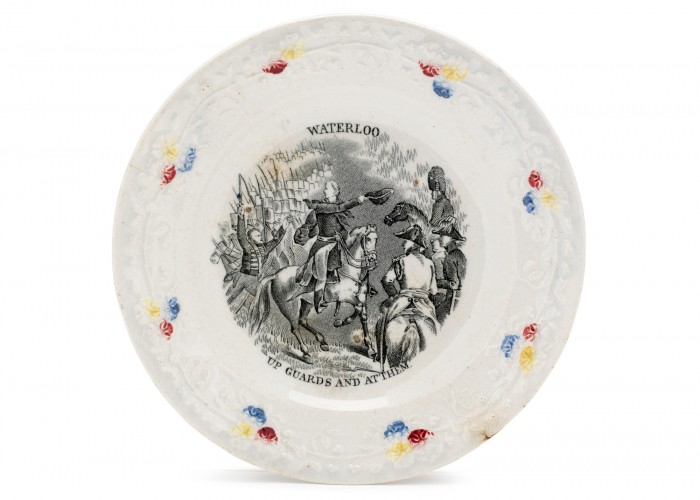Commemorative Waterloo Memorabilia


 Commemorative jug with Duke of Wellington. Copyright National Army Museum.
Commemorative jug with Duke of Wellington. Copyright National Army Museum.
 Commemorative plate with Duke of Wellington. Copyright National Army Museum.
Commemorative plate with Duke of Wellington. Copyright National Army Museum.
These are just a few examples of the many types of collectables made in the years after the Battle of Waterloo. They include a painted plate, a stoneware jug, and a decorative panel carved out of oak, all featuring images of the Duke of Wellington and other symbols of Allied victory. These objects show both the popular enthusiasm for Waterloo, and the increasing wealth of the British public. They would have been status symbols, giving their owners the opportunity to show off patriotism and wealth at the same time.
The Battle of Waterloo brought an end to over twenty years of near-constant war between Britain and France. Widespread rejoicing greeted the Allied victory at Waterloo, and the Duke of Wellington was treated in Britain as a conquering hero. The British public were, for the most part, happy for an end to war and the threat of French invasion. Many thousands of them celebrated the victory by going shopping for Waterloo souvenirs.
In 1815, the Industrial Revolution was sweeping Britain, and trade with the rest of the world was booming. Much of the British public were growing richer, with more disposable income to spend on decorative and patriotic objects. Although millions of Britons still lived in terrible poverty, a rising middle class wanted to show off their purchasing power.
The oak panel is based on a profile of the Duke of Wellington by sculptor Peter Rouw, who also carved cameos for the monarchy. The leaves around the edge of the panel are laurels, traditionally given to victorious Roman generals.
The stoneware (clay) jug is printed with portraits of the two Allied generals at Waterloo, the Duke of Wellington and Prussian Prince von Blücher. It also bears the words ‘Peace & Plenty’. This jug shows the hope that peace would bring an end to the economic depression in Britain.
The plate is emblazoned with the words “Up Guards and at Them!” This was believed to be the order that the Duke of Wellington gave at the end of the Battle of Waterloo, commanding a regiment of Guards to stand up and attack the French troops. The Guards had been lying down on the ground, to avoid French cannonballs. The Duke later denied saying these exact words, but the phrase had by then become a popular one – more evidence of the mythology that quickly grew around the famous Battle of Waterloo.
-
Curatorial info
- Accession Number: Jug NAM. 2006-08-13, panel NAM. 2000-07-119-1
-
Use this image
You can download and use the high resolution image for use in a non-profit environment such as a school or college, but please take note of the license type and rights holder information below
- Rights Holder: Copyright National Army Museum. Photography Relic Imaging Ltd.
- License Type: Creative Commons
Find it here
This object is in the collection of National Army Museum








